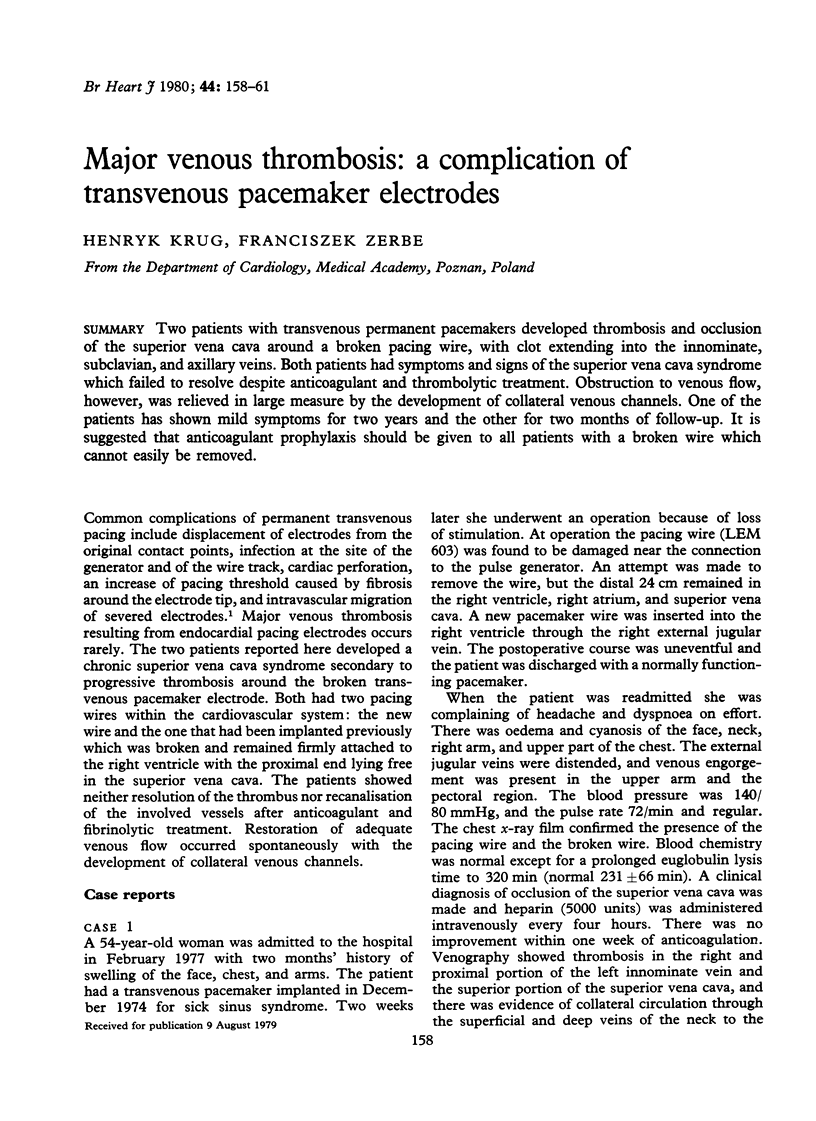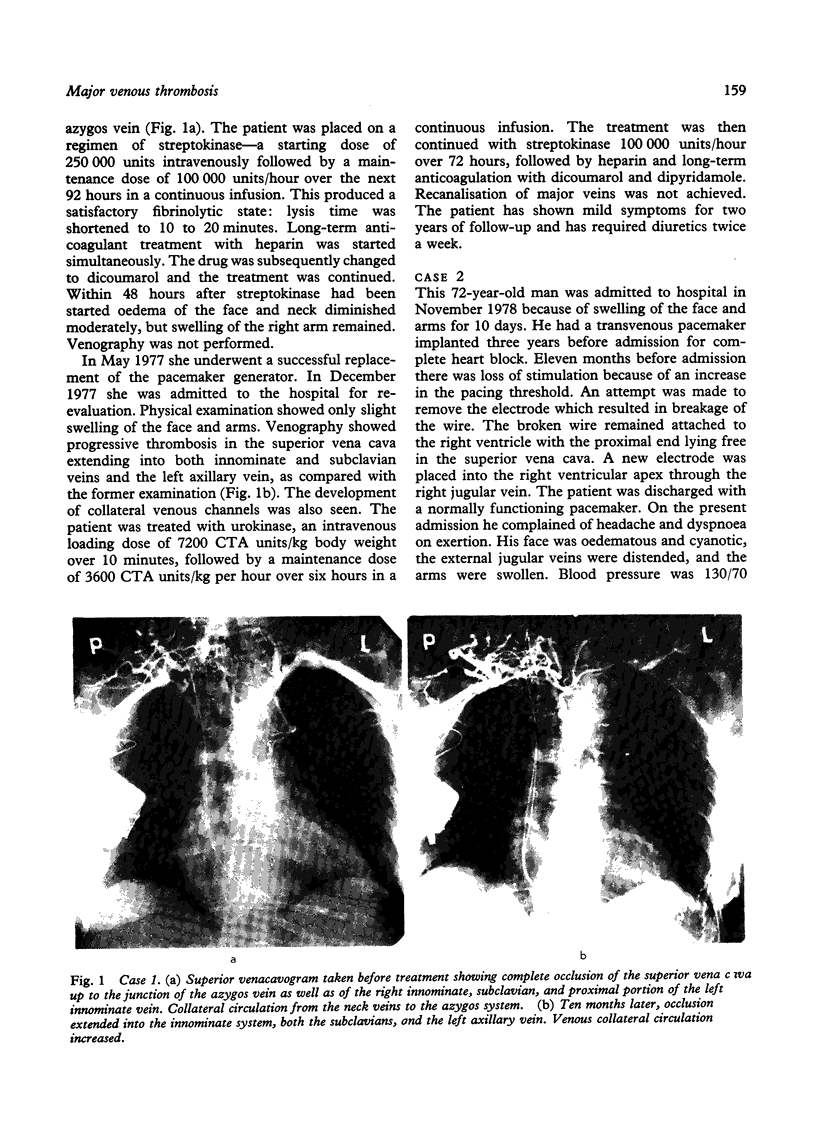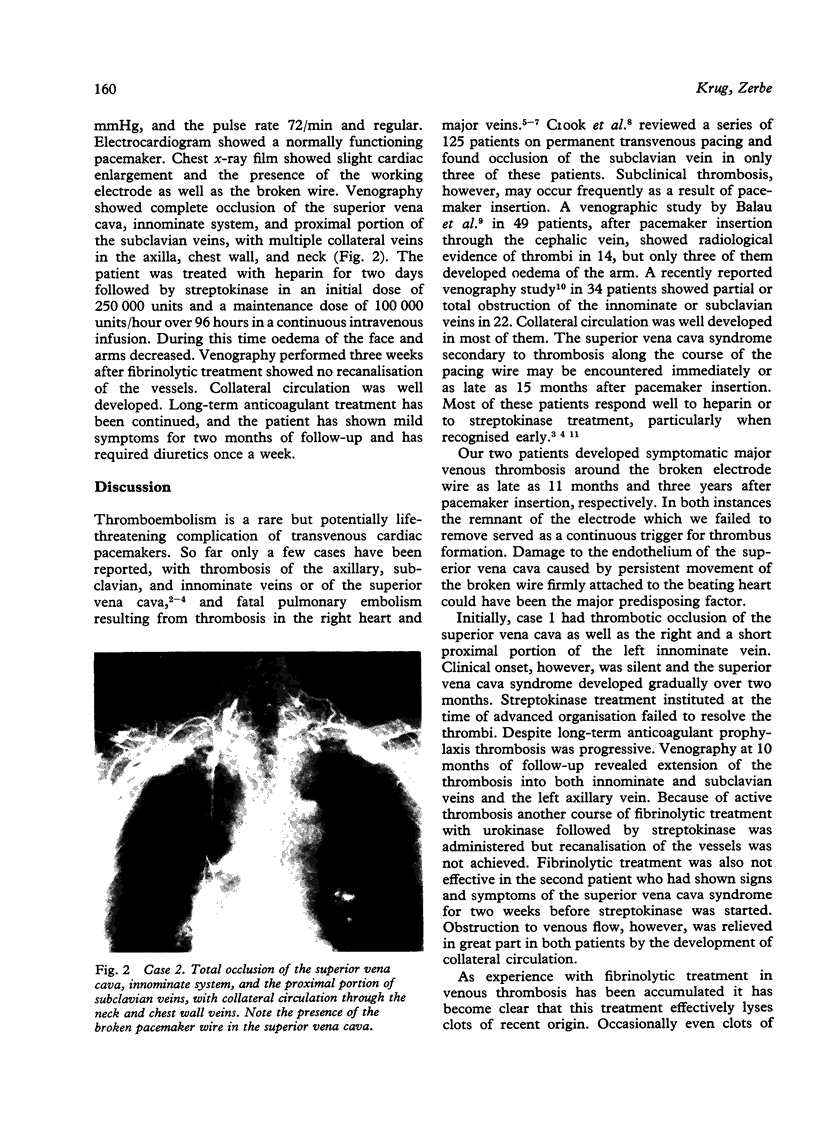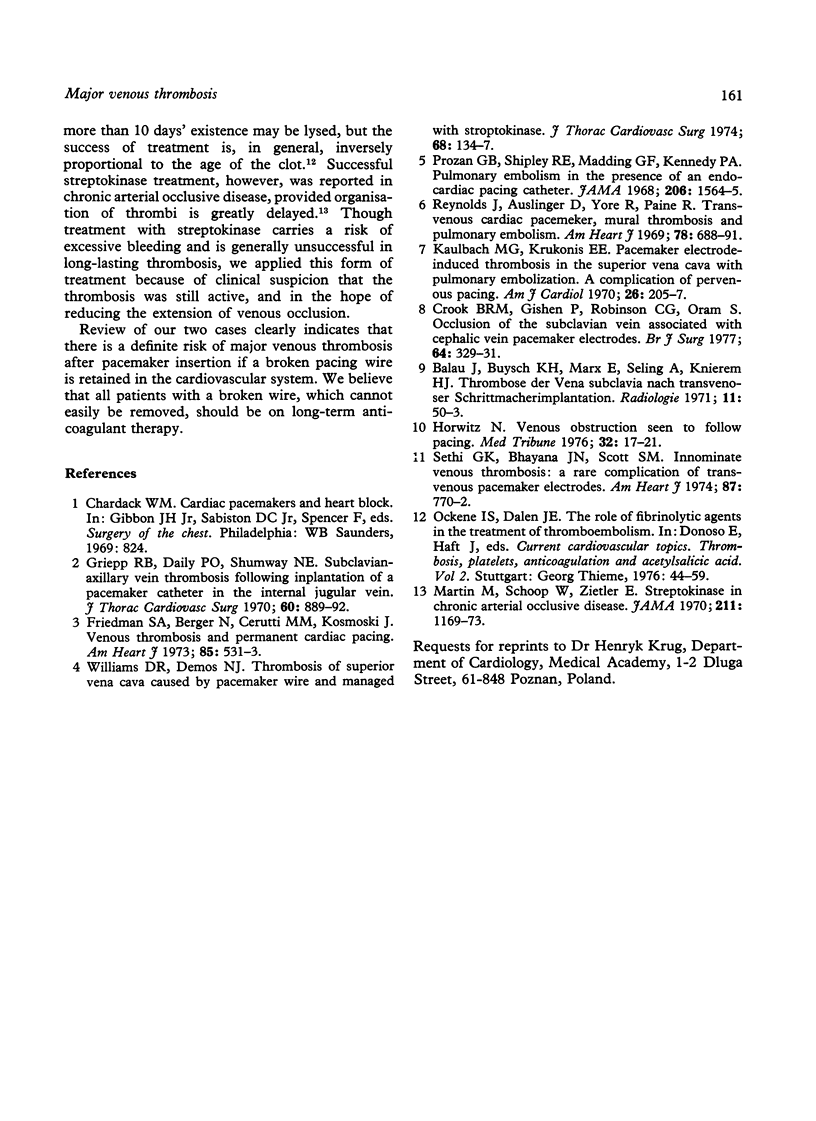Abstract
Two patients with transvenous permanent pacemakers developed thrombosis and occlusion of the superior vena cava around a broken pacing wire, with clot extending into the innominate, subclavian, and axillary veins. Both patients had symptoms and signs of the superior vena cava syndrome which failed to resolve despite anticoagulant and thrombolytic treatment. Obstruction to venous flow, however, was relieved in large measure by the development of collateral venous channels. One of the patients has shown mild symptoms for two years and the other for two months of follow-up. It is suggested that anticoagulant prophylaxis should be given to all patients with a broken wire which cannot easily be removed.
Full text
PDF



Images in this article
Selected References
These references are in PubMed. This may not be the complete list of references from this article.
- Balu J., Buysch K. H., Marx E., Seling A., Knieriem H. Throose der Vena subclavia nach tranvenöer Schrittmacherimplanation. Radiologe. 1971 Feb;11(2):50–53. [PubMed] [Google Scholar]
- Crook B. R., Gishen P., Robinson C. R., Oram S. Occlusion of the subclavian vein associated with cephalic vein pacemaker electrodes. Br J Surg. 1977 May;64(5):329–331. doi: 10.1002/bjs.1800640508. [DOI] [PubMed] [Google Scholar]
- Friedman S. A., Berger N., Cerruti M. M., Kosmoski J. Venous thrombosis and permanent cardiac pacing. Am Heart J. 1973 Apr;85(4):531–533. doi: 10.1016/0002-8703(73)90499-7. [DOI] [PubMed] [Google Scholar]
- Griepp R. B., Daily P. O., Shumway N. E. Subclavian-axillary vein thrombosis following implantation of a pacemaker catheter in the internal jugular vein. J Thorac Cardiovasc Surg. 1970 Dec;60(6):889–892. [PubMed] [Google Scholar]
- Kaulbach M. G., Krukonis E. E. Pacemaker electrode-induced thrombosis in the superior vena cava with pulmonary embolization. A complication of pervenous pacing. Am J Cardiol. 1970 Aug;26(2):205–207. doi: 10.1016/0002-9149(70)90782-4. [DOI] [PubMed] [Google Scholar]
- Martin M., Schoop W., Zeitler E. Streptokinase in chronic arterial occlusive disease. JAMA. 1970 Feb 16;211(7):1169–1173. [PubMed] [Google Scholar]
- Prozan G. B., Shipley R. E., Madding G. F., Kennedy P. A. Pulmonary thromboembolism in the presence of an endocardiac pacing catheter. JAMA. 1968 Nov 11;206(7):1564–1565. [PubMed] [Google Scholar]
- Reynolds J., Anslinger D., Yore R., Paine R. Transvenous cardiac pacemaker, mural thrombosis, and pulmonary embolism. Am Heart J. 1969 Nov;78(5):688–691. doi: 10.1016/0002-8703(69)90521-3. [DOI] [PubMed] [Google Scholar]
- Sethi G. K., Bhayana J. N., Scott S. M. Innominate venous thrombosis: a rare complication of transvenous pacemaker electrodes. Am Heart J. 1974 Jun;87(6):770–772. doi: 10.1016/0002-8703(74)90425-6. [DOI] [PubMed] [Google Scholar]
- Williams D. R., Demos N. J. Thrombosis of superior vena cava caused by pacemaker wire and managed with streptokinase. J Thorac Cardiovasc Surg. 1974 Jul;68(1):134–137. [PubMed] [Google Scholar]




